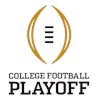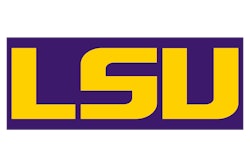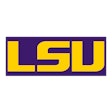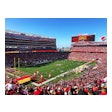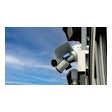Copyright 2017 Newsday, Inc.
Newsday (New York)
Girls lacrosse players on Long Island have the option for the first time this spring to wear standardized lacrosse-specific helmets after years of debate over whether helmets will make the game safer or lead to a more violent style of play.
For Long Island high schools, the decision to make the helmets optional has created a new controversy. Most high schools are leaving the decision to buy and wear helmets up to the players. Other schools are buying the helmets and letting the players decide if they want to wear them. At least seven high schools are making the helmets mandatory.
A handful of games have been played this season, and most players are choosing not to wear the helmets. Coaches and school administrators say it's because the players find them uncomfortable and don't like the way they look. Today's high school players also have grown up playing without them and don't see the need to start wearing them now, officials say.
"You're talking about a culture change," Mount Sinai High School coach Al Bertolone said. "We have some kids that like them, some kids that hate them, a lot of kids on the fence in between."
Girls lacrosse, with more than 4,400 players on 200 varsity and junior varsity teams on Long Island, features players swinging sticks that have small netted baskets on their ends to shoot a hard rubber ball past a goaltender into a net.
"I like the game as it is, but the more I coach it, the more I see head hits than ever before," Bertolone said. "You say to yourself that the game is supposed to prevent that, but right now it's not happening. It's already become a more physical game, more physical than a traditionalist would have wanted it."
The girls game has long resisted helmets over the fear that it will become more like boys lacrosse, where physical contact - both players and sticks - is an integral part of the action. The girls' game does not allow any intentional contact and is considered, in theory, to be a noncontact sport. But the reality is players can get hit in the head with the ball or another player's stick.
As more becomes known about the damaging effects of head injuries and concussions, there has been a greater focus on the equipment that might help reduce the risk of injury.
"If I had a daughter and she played lacrosse," Comsewogue athletic director Matt DeVincenzo said, "I would want her to wear it."
West Islip coach Joe Nicolosi has another view.
"I'm not a big proponent of it for a couple of reasons," Nicolosi said. "I feel like it will make the games more aggressive. With girls wearing headgear, I feel like the girls are going to be more influenced to maybe swing their sticks because they feel like the girls are more protected. If I'm guarding someone wearing a helmet, maybe I'll take a shot at them. If I hit their head it's no big deal."
There were 65 suspected concussions among 4,431 girls lacrosse players on Long Island last season, or one per 68 players. Girls were more likely to suffer concussions in soccer (one per 41 players) and basketball (one per 54 players) than lacrosse. There were 71 suspected concussions among 5,763 boys lacrosse players, or one per 81 players.
Newsday compiled the concussion figures by obtaining incident reports from more than 100 schools via Freedom of Information Law requests and sport-specific participation figures obtained from New York State Public High School Athletic Association, the state's governing body for public school sports.
From AB: Are High-Tech Football Helmets Any Safer?
Two styles of soft helmets approved
U.S. Lacrosse, the sport's national governing body, announced its decision to make helmets optional for all levels of girls lacrosse - from youth leagues to college - in August. On the high school level, it is up to each state's athletic association to adopt the rules. Every state is allowing the new rule except Florida, which already had rules about mandatory headgear.
U.S. Lacrosse said its decision was based on six years of research, including whether to introduce hard-shell helmets like the ones boys wear into the girls game. Ultimately officials decided on a defined standard for soft helmets, which, manufacturers say, won't injure a helmetless player in an accidental collision.
The two styles of helmets approved for use by U.S. Lacrosse resemble bicycle or hockey helmets in appearance but differ because the material that makes up the shell is more flexible to the touch. The Cascade helmet, which costs $149.99, has a steel face mask that covers the player's eyes. The Hummingbird, which costs $139, fits around the goggles players normally wear.
Manufacturers must prove that the headgear can withstand a 60-mph impact from the ball. U.S. Lacrosse says that number was chosen, based on its studies, "to replicate impacts at the high-end of what is seen on the field." The helmets also must pass a deformity test to prove its flexibility upon impact.
Nicolosi said offensive players wearing helmets "will go harder and stronger" to the goal because they won't worry about possibly running into defenders or sticks.
"This is simply a very silly argument," said Dawn Comstock, a University of Colorado professor who studies high school sports injuries. "Helmets protect kids - period. Any unintended consequence associated with increased recklessness, as highly unlikely as I believe it would be, would be a problem of poor parenting, coaching and officiating rather than something that can be attributed to the helmet."
Introducing helmets into the game is such a point of contention that some people refuse to call the equipment a helmet. The preferred term is headgear.
"We feel the word helmet is inaccurate and gives the player and parent the wrong impression," said Todd Nelson, NYSPHSAA assistant director.
U.S. Lacrosse doesn't care what people call them.
"You can call it helmet, you can call it headgear, it doesn't matter," said Ann Kitt Carpenetti, U.S. Lacrosse vice president of lacrosse operations, who played at Oceanside High School. "At the end of the day if it is covering the whole head, it's essentially a helmet.
"The debate is over," Carpenetti said. "Wear it or not. It's your choice."
Different rules for boys and girls
In girls lacrosse, only the goalies are allowed to wear hard-shell, full-cage lacrosse helmets like the ones boys use. Girls are required only to wear goggles and a mouthpiece.
Boys lacrosse is more physical, with stick-to-body contact being an integral part of the game. Boys must wear a hard-shell helmet with a face guard, protective gloves and elbow and shoulder pads. Girls do not use protective pads with the exception of the goalies.
Both sports are played with the same solid rubber ball, which weighs between 5 and 5.25 ounces. In the boys game, players can shoot at any time. Girls are only allowed to shoot when the pathway to the goal is clear to protect players from getting hit by the ball.
Comstock said research shows that concussions were the most common girls lacrosse injury last school year nationwide, accounting for 34.5 percent of injuries.
Girls lacrosse players "would definitely sustain fewer head injuries, including concussions, if they were allowed to wear the same type of helmets" that the boys wear, Comstock said. She said it will take time to figure out whether the new soft helmet will have a similar effect on head injuries.
"Neither I nor anyone else yet knows if this new helmet girls are allowed to wear will be effective in reducing injuries or not," she said. "We will have to wait until surveillance data is in to answer that question."
The concussions occur most frequently because of contact from the ball or stick to the head, according to Comstock's annual report that culls injury data from a group of 100 schools nationwide. Concussion was followed by ankle sprain (19 percent) and by knee sprain (11.5 percent).
"Every time someone gets hurt, everyone on the sidelines says, 'I don't know why they don't make the girls wear helmets,' " said Jeanmarie Volkmann, whose daughter Paige is a senior on the Center Moriches team.
Volkmann said that when Paige, who is committed to playing lacrosse at Binghamton University next year, first saw the helmets, she said, "I'm not going to wear that."
"She's a typical lacrosse player," the mother said. "She has hair down to her fanny. It goes up into the messy bun on her head and the cool headband. It's the whole lacrosse girl look. And we're kind of messing with that now."
Center Moriches is among the schools that decided to make the helmets mandatory.
"We've all seen plenty of head injuries out there," Volkmann said. "I think in that regard she realizes it's a good thing. . . . I haven't seen any harder hits than before, so I don't think the game has changed at all."
On the college level, there are no players wearing helmets at either of Long Island's Division I schools - Stony Brook and Hofstra universities - according to school representatives.
"I don't like the idea of helmets," Stony Brook coach Joe Spallina said. "I feel with no helmets there is a mutual respect between players to be safety conscious."
Hofstra coach Shannon Smith said helmets provide an extra layer of safety in a game that she says is played at a faster speed than ever before.
"The game has evolved," Smith said. "It's become quicker. It's become faster. People can shoot from further out now. I think the headgear will make the game safer because the game has evolved."
To wear or not to wear
Nina Van Erk, the executive director of Nassau County high schools sports, said there was a lot of discussion among superintendents and school officials about the new helmet rule leading up to the season. She said she does not expect the majority of players to wear the helmets, at least not right away.
"I think a few teams will wear the headgear," Van Erk said. "The majority of schools will not."
Van Erk said it will become more common in a few years as younger players who are accustomed to wearing headgear reach the high school level.
In January, the Freeport school district spent $9,356 on 90 Cascade helmets, enough to outfit its entire high school and middle school programs.
"My feeling is the kids might complain a little bit, but no parent is going to complain," athletic director Jonathan Bloom said.
DeVincenzo, the Comsewogue athletic director, said his school board has been asking about helmets in girls lacrosse for years. He said that when the board was presented with buying helmets this year, "They said immediately yes, go get them."
DeVincenzo said the district spent $7,552 on 80 Cascade helmets.
"I don't think the girls are crazy about them," DeVincenzo said, "because they're a little uncomfortable from what I've heard. But like anything else, in time they'll get used to them. I haven't had any parent say, 'How come they're wearing them?' "
The Hempstead district spent $5,700 on 50 of the Hummingbird models in January. Athletic director Bob Cincotta said the district felt a responsibility to purchase the optional equipment because many families might not be able to afford to do so themselves.
"If you're asking a kid in Cold Spring Harbor, Jericho or Syosset to spend $149 on a helmet, that's different," he said. "Here, if we don't provide the product for the kid, the kids don't get them."
Some schools purchased helmets and are leaving the decision to wear them up to the players. The Great Neck district, which includes two high schools, spent $17,400 on 160 helmets, enough to outfit everyone on its varsity, junior varsity and middle school teams. Coaches said only one high school player is choosing to wear a helmet.
Smithtown chose to mandate helmets at its two high schools before the start of the season, citing safety concerns. But athletic director Pat Smith agreed to loosen the policy this week after Smithtown East coach Ann Naughton called him to say players were struggling to get used to the helmets.
"I'm open-minded to anything that happens here," Smith said, "because this is all evolving so quickly."
Most schools are taking a wait-and-see approach.
"If it becomes a mandated piece of equipment," Manhasset athletic director Jim Amen said, "then we will go out and buy all of the headgear for our players."
'They're growing on me'
Haley Dillon, a senior at Mount Sinai, said she has suffered three concussions - two playing lacrosse last season and the other playing soccer as a sophomore.
Haley was hit in the head by an errant shot last season. She said she had headaches but didn't report her symptoms.
"I figured I was probably sick or something," she said, "and I didn't want to say something just in case, because that would mean I would have been shut down."
In the next game a few days later, she was struck in the head by another player's stick. She said she instantly felt dizzy and left the game. She was diagnosed with a concussion and missed nearly two weeks.
Still, Haley doesn't want to wear the helmet.
"It hurts your temples and you have blind spots," Haley said. "I think if you give them to the younger kids, they could get used to them as they get older. But it's tough for seniors or varsity players who have been playing with goggles their whole life to start wearing these now."
Haley's mother, Tricia Dillon, wants her to wear the helmet.
"I really want them all to wear it," Tricia Dillon said. "I've been saying to my daughter and her friends: 'Wear them, wear them, wear them. Start a trend.' Because if we have enough girls wearing them, other girls will say, 'That's cool,' and they'll start, too."
Bertolone, Haley's coach, who also is on board, says of Haley, "She has been wearing it in practice, scrimmages and we are now working on games."
"Coaches like to say their girls don't get hit in the head," Bertolone said. "I'm not afraid to say my girls get hit in the head. I'm not one to rock the boat. I don't tell people what to do. But I do want them to be safer."
The girls admitted to coming around, albeit slowly.
"I didn't like them at first," senior Leah Nonnenmann said. "They're growing on me."
Senior Julia Markey added, "It's obviously something that takes some getting used to. I think it's good because I think it's a lot safer. I know as a defender people get checked in the head a lot."
Asked for a reason not to wear the helmets, Markey thought for a few seconds. "I don't think there's any reason not to wear them," she said.
Read More of Today's AB Headlines
Subscribe to Our Daily E-Newsletter
Terms and Conditions Privacy Policy












